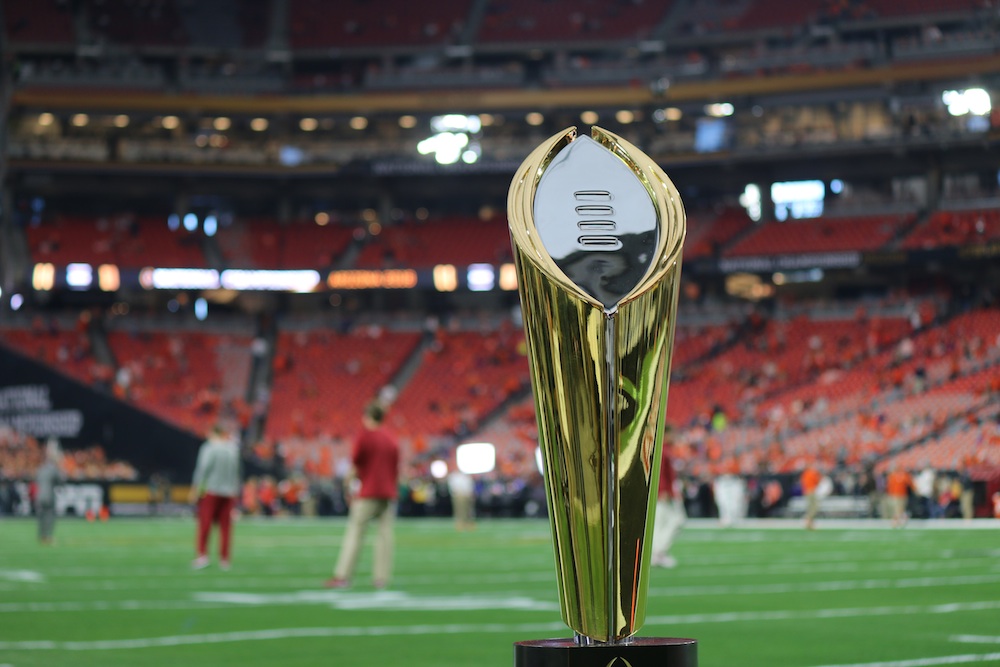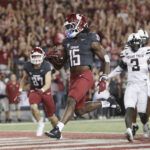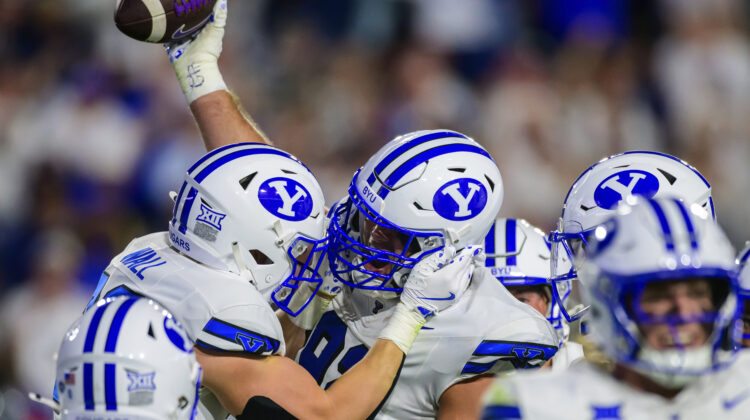It’s hardly unprecedented for Utah and Brigham Young to produce elite seasons in the same year. In 2021, Utah won the Pac-12 championship while the Cougars won 10 games as an Independent. Both teams won at least nine games in 2015 and 2016.
The delicious difference this fall? The Utes and Cougars are in the same conference — and that conference is the Big 12, not the Mountain West, where the arch-rivals had intrinsic advantages over many conference foes.
Granted, the teams are a long way from winning nine or 10 games. The season is merely 25 percent complete; conference play is just underway; and more can go wrong than right in a sport where trajectories are determined by a handful of plays over the course of months.
But to date, the results are impressive. The Utes and Cougars are unbeaten, ranked in both major polls and headed for a Holy War showdown in 45 days that could have conference championship implications for both teams.
Utah experienced a few wobbly moments early in the season, then dominated No. 14 Oklahoma State last weekend in sweltering conditions and with a backup quarterback, Isaac Wilson, leading the way.
Brigham Young had one close call in the opening weeks (at SMU) but bounded into the Big 12 spotlight with a sterling performance against No. 13 Kansas State that was arguably the best all-around performance of coach Kalani Sitake’s tenure.
The challenges this week — the Utes host Arizona, the Cougars visit Baylor — will add clarity to the canvas in our ongoing evaluation of both teams.
Is Utah the class of the Big 12, as many expected, including the Hotline, with a College Football Playoff berth waiting for the Utes in early December?
Could Brigham Young, pegged for 13th place in the Big 12’s preseason poll, be one of the conference’s best teams?
Are the Cougars (dare we say it) better than the Utes?
The answers could emerge before the Holy War. We prefer the status quo, with the teams moving in lockstep toward a riveting November.
To this point, there are two obvious similarities:
— Both teams have uncertainty at the most important position.
Utah quarterback Cam Rising has missed the past two games with a hand injury. It did not appear serious initially, and the Utes have given no indication that Rising will miss extended time. But it’s Rising, so make no assumptions about his present or future health.
BYU quarterback Jake Retzlaff is healthy. But he’s inconsistent with accuracy, loose with his ballhandling and erratic with his decision-making. At least Retzlaff was all those things through three games. But like the Cougars in general, he played his best against Kansas State and, for the first time, looked like a quarterback capable of leading his team to a first-rate season.
— Both teams are stout defensively.
This comes as no surprise for the Utes, whose success over two decades is rooted in a punishing, relentless defense. The 2024 edition looks familiar, as the Utes are holding opponents to just 4.4 yards per play (No. 24 nationally). Last weekend, they limited an Oklahoma State offense that had been averaging 43 points per game to just 19.
The stout defense comes as a major surprise for the Cougars, who were a turnstile as recently as last season when they allowed 29.8 points per game (99th nationally) and 5.9 yards per play (92nd). Those numbers have been chopped to stumps this fall, with opponents averaging 12.8 points (18th nationally) and 4.2 yards per play (16th).
BYU’s improvement cannot be attributed to the quality of opposing offenses. Kansas State scored 31 points against Arizona but nine against the Cougars. SMU scored 15 against the Cougars and 66 against TCU.
In both Salt Lake City and Provo, the pass rush is relentless, the linemen regularly win one-on-one duels at the snap of the ball, and the linebackers create plays all over the field.
The Utes have more sacks and tackles-for-loss; the Cougars have more turnovers forced. Utah’s third-down defense has been airtight. BYU’s resistance in the Red Zone has been superb.
That’s where the similarities end.
The Utes have more offensive playmakers and a better running game. If Rising gets healthy — and stays that way — then touchdowns won’t be in short supply.
We aren’t convinced BYU has the personnel necessary to score consistently, especially if Retzlaff remains erratic and the running game continues to sputter. (Injuries are a prime culprit.)
Also, the Utes know how to win meaningful games on the road down the stretch — the games that lead to conference championships.
The Cougars do not. The last time they contended for a conference title, in the late 2000s, Sitake was a young defensive coordinator in Salt Lake City.
Inexperience in big games, uneven quarterback play, a spotty running game — those aren’t usually the building blocks for success.
But BYU has been full of surprises thus far. Will the plot twist continue?
If so, the Utes and Cougars should produce a riveting November.
*** Send suggestions, comments and tips (confidentiality guaranteed) to wilnerhotline@
*** Follow me on Twitter/X: @WilnerHotline
Related posts:
 VIDEO – Thursday July 7th Jon Wilner and Brad chop it up on Pac-12 future
VIDEO – Thursday July 7th Jon Wilner and Brad chop it up on Pac-12 future

Big Ten Commissioner Tony Petitti. (AP Photo/Darron Cummings)
Wilner – Big Ten football media days: What Petitti’s address says about the 18-school, bicoastal conference VIDEO – Brad and Wilner: Future of Bowl Games with expanded CFP
VIDEO – Brad and Wilner: Future of Bowl Games with expanded CFP

Washington State running back Djouvensky Schlenbaker\ (AP Photo/Young Kwak)
Wilner – Northwest perfection, Oregon’s escape, Utah’s scare, same old Colorado and McMillan MIA

